As a new drummer or the parent of a beginning student, it can be confusing to know what kind of drum set configuration to purchase. As a long time drummer and instructor, I’ve encountered a wide variety of different setups and though I would share my experience with you.
A three piece drum set consists of a bass drum, a snare drum and one tom. Four and five piece drum sets add another tom incrementally to each set. This means that a four piece kit consists of a bass drum, snare drum and 2 toms, whereas a five piece kit consists of a bass drum, snare drum and 3 toms.
As you might have guessed, there are a lot of different configuration options for each of these kits. Let’s explore these in more detail so that you know exactly what you’re looking at the next time you go drum shopping!
The Most Popular 3, 4 and 5 Piece Drum Set Configurations
Over the decades, certain norms have come into existence in how drums are setup and miraculously, those norms haven’t changed much in the last 60+ years. Because of this, most drum manufacturers offer pretty much the same configurations across the board, allowing us to generalize the information in this article.
Lets dig into each standard setup here and then we’ll talk about some common variations of each. We will actually start with a 5 piece drum set, as it is by far the most common and the other two setups really just remove rack toms from this configuration.
Five Piece Drum Set
This is definitely the king of all setups, and what you probably picture when you think of a drum set. This setup consists of a bass drum, a snare drum, two rack toms (or hang/mounted toms or small and medium toms) and a floor tom. (If you need a primer on what all of these are, check out my ‘Suggested Reading’ link below.)
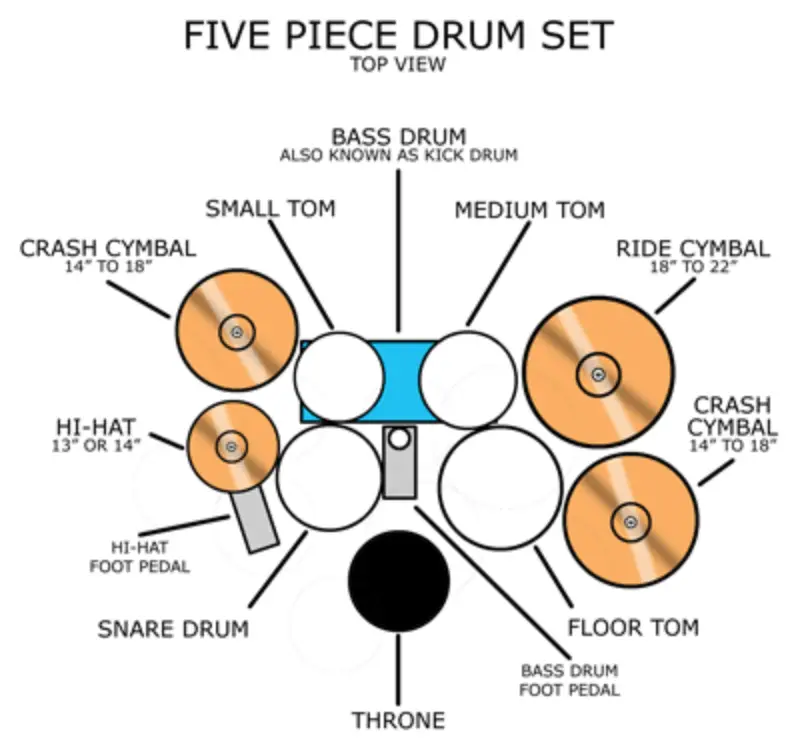
In addition to these drums, most 5 piece kits will also include a hi-hat, one ride cymbal and one or two crash cymbals, along with a myriad of stands to hold all of these various instruments.
It is most common to have the small and medium toms mounted directly to the bass drum, whereas the floor tom is a standalone instrument that sits directly on the floor (as the name suggests) suspended by three legs. Hopefully the top view diagram above puts all of these components into perspective for you as you’re reading it.
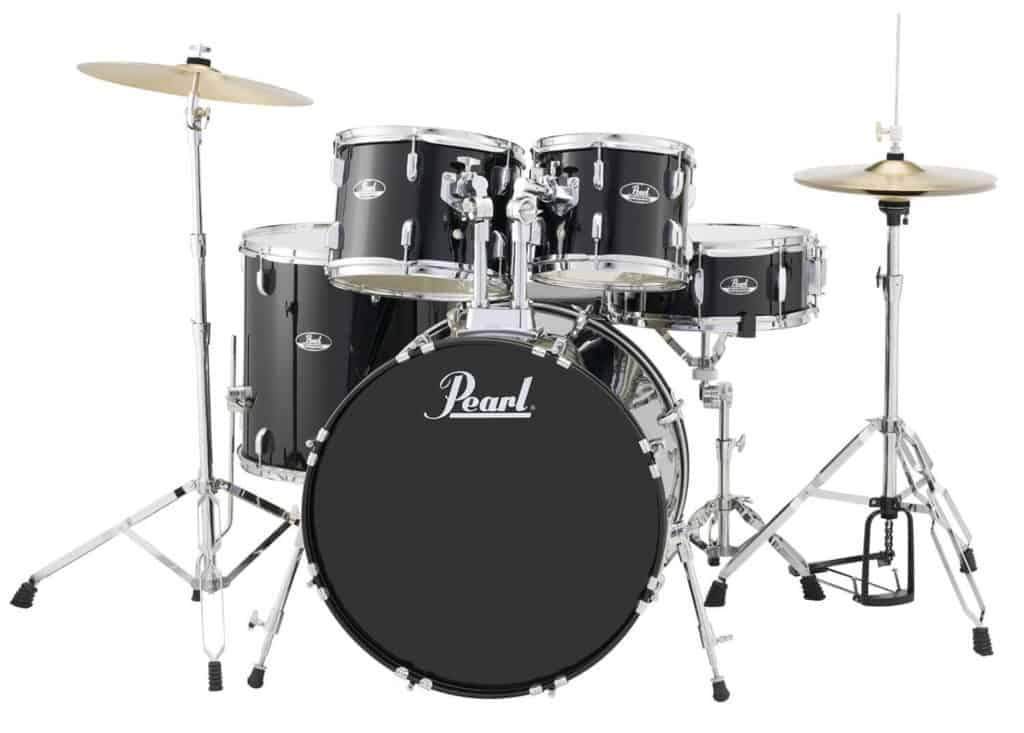
Pictures are worth a 1,000 words however, so here is a nice shot of a typical five piece drum set which you might see setup at your local music shop. In this picture you can clearly see the two toms mounted to the top of the bass drum, with the floor tom standing on its own legs to the drummer’s right.
Four Piece Drum Set
The standard four piece drum set is practically identical to the 5 piece, but picture the middle tom missing. While this may not be the most common setup currently, it is probably the most historically significant configuration as this was THE standard a few decades ago.
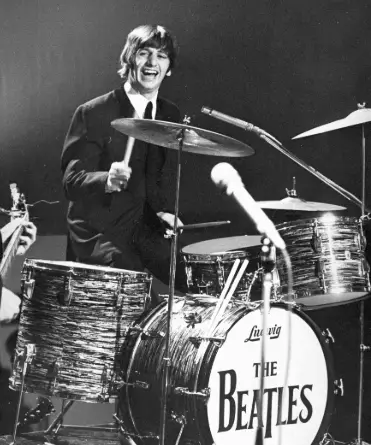
Does this drum set look familiar? Ringo Starr of the Beatles and most of his peers at the time all played four piece configurations.
With this setup, there are two schools of though with regards to the small tom. The most common scenario today is to see it mounted on top of the bass drum, much like in the example above. Back then however, it was not uncommon to see this drum mounted on a tall snare drum stand off to the side of the bass drum. While this makes positioning a bit awkward, it is definitely effective and you see a lot of modern players going back to this type of setup.
Three Piece Drum Set
As mentioned earlier, the three piece setup consists of a bass drum and a snare drum set up in standard fashion, and typically a 14″ or 16″ floor tom as the 3rd drum. You rarely see a 3 piece setup with a smaller rack tom mounted on the bass drum.
While not nearly as popular as its larger counterparts, there is a pretty big contingent of, what I will call ‘minimalist’ drummers, who are incredibly good at maximizing what they can get out of just a few instruments around them. In fact, you’ll be amazed at what some people can do with just a snare and bass drum.
I like to think of the 3 piece drum set as the low rider of the drum community. The look of this kit is quite flat, as there are no mounted toms to contend with. This leaves the cymbals as the highest part of the kit, which can in turn be mounted relatively low.
One thing to watch out for with the term ‘3 piece’ is that this can sometimes refer to a configuration consisting of a bass drum and two toms without a snare drum. Some manufacturers offer this type of configuration under the assumption that a drummer might be adding their own snare drum to the kit.
Suggested Reading: If you are completely new to the world of drums and drumming, you might need a refresher on the drums which actually make up a drum set. If so, I would recommend reading this article that I wrote this article about the different drums in a drum set .
.
What Are Some Alternate Set Up Options?
There is of course lots of room for creativity in the drumming world, and that is not limited to just the playing. Drum hardware can get quite sophisticated, allowing for some pretty innovative ways to configure a drum set.
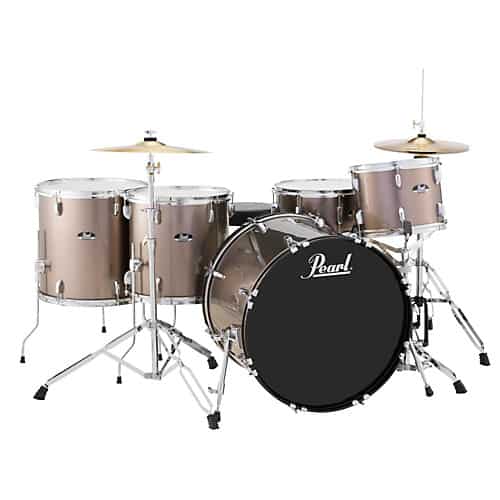
One of my all time favorite variations of the 5 piece drum kit is seen to the right, where one of the high toms is actually moved down to the floor, effectively mimicking a 4 piece drum set with an extra floor tom added to it. This was a setup which was most famously used by the legendary John Bonham of Led Zeppelin.
In this example as well, you can see the high tom, which has been mounted on a tall snare drum stand to the side of the bass drum.
Choosing the Right Configuration for You
This is a pretty tough topic to handle sometimes because picking a drum set can, and almost has to be a very individual and unique decision. No two humans are created alike…and the same can almost be said about a drum set. That said, I can give you a couple of key criteria to focus on when looking into configuration
Music Styles: Are you playing rock, funk, hip hop or country? For these styles a 4 or 5 piece layout will likely be appropriate. Jazz players almost always go with a 4 piece kit (typically in smaller drum sizes). The three piece tends to find its home in all sorts of odd places, but has been known to show its head in rock from time to time.
Physical Limitations: Are you working through any sort of physical limitation? If so, this might influence your decision as well. For example: anyone with limited mobility might opt for a smaller layout with smaller drum sizes to allow them to get around the kit a bit more easily.
Look: I hate to say it, but sometimes there is just that “look” that you’re going after with your drums. There are many who overlook the practical application of playing comfort and sound when selecting a drum set, opting instead to go for the kit that just ‘looks cool’. I’m not really one to judge here though as I have definitely done that before and I think it does play a factor in your playing from a confidence perspective.
Personal Preference: At the end of the day, it comes down to comfort and personal preference. As your skills as a drummer progress and you are influenced by various players and genres, so too will your preference for gear evolve.
Why You May NOT Want The Biggest Drum Set Out There
When I was a Freshman in high school, I had been playing on a really cheap used drum set for quite a few years and it was time for an upgrade. I saved some money and got the opportunity to buy a much nicer (but still used) kit off of a guy who worked at the local music shop.
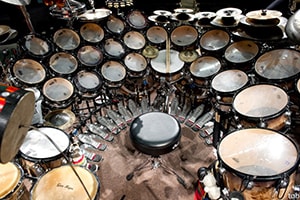
This drum kit was MASSIVE with two bass drums 3 rack toms, two floor toms and a drum rack with all sorts of hardware on it. …but it was fun, had instant appeal and was affordable! I wised up a bit a few years later and downsized to a 5 piece kit when it was time to upgrade to a truly professional drum set. And while I do look back at that monster kit fondly, I do have a few regrets about it, primarily because I feel like it stifled my creativity a bit.
There is inherent creativity that creeps into your playing with smaller kits. I think this is mainly due to the fact that with fewer options of stuff to hit, you’re left with having to solve musical challenges in a creative way with the instruments you have.
Affordability is another factor here as large kits tend to cost a lot of money. There is no way I would have been able to afford that massive space station drum kit in high school had it not been an absolute steal of a deal.
At the end of the day, if a bass drum, snare drum and a few cymbals is all you can afford – then by all means go for it! You’ll be surprised at how much the limitation of those few instruments helps your craft evolve. Besides, you can always add more drums to your setup later.
Related Questions
How much does a used drum set cost? You can typically find a cheap used drum set online for around $300, but expect it to be a relatively low quality product. For a decent drum set, plan on spending anywhere from $600 to $1,000, which will often be a much better investment.
Do drum sets come with cymbals? Most drum sets do not come with cymbals, but will include all of the necessary hardware in order to mount separately purchased cymbals. If cymbals do come with a drum set, they are likely going to be very low quality instruments. Most cymbal companies offer cymbal packs, which are an easy way to acquire decent cymbals at a reasonable price.
